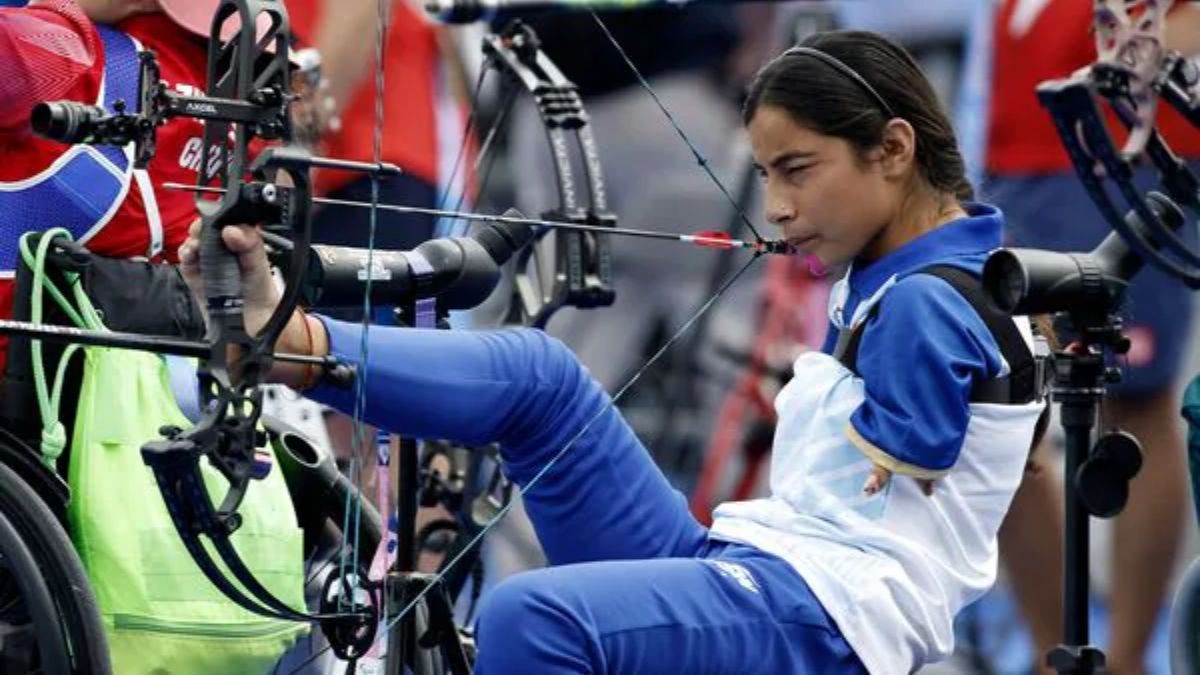If you have been scrolling through social media you would have definitely come across Paralympian archer Sheetal Devi’s stunning bullseye shot at the Paris 2024 Paralympics.
Although the 17-year-old armless archer, who shoots with her legs, shoulders, and jaw, narrowly lost in the pre-quarterfinals to Chilean archer Mariana Zuniga by a point, her Olympic debut remains nothing short of inspirational.
Born with phocomelia, a rare condition that left her without fully developed arms, The Paralympics bronze medallist’s journey is a powerful testament to determination and grit.
Here’s a closer look at the archer’s story and the condition she suffers from.
What is Phocomelia?
According to Healthline, phocomelia, or amelia, is a rare congenital (present at birth) condition that characterised by the severe underdevelopment or absence of limbs, affecting either the upper, lower, or both sets of limbs.
Impact Shorts
More ShortsDr Sudhir Kumar, consultant neurologist, at Apollo Hospitals Hyderabad, told Indian Express that sometimes, while the entire upper limb is missing a person may be born with only fingers (as an appendage).
What causes Phocomelia?
Phocomelia’s exact causes remain somewhat unclear, but multiple factors are likely involved. According to Healthline, it can be inherited genetically, with abnormalities linked to chromosome 8.
Phocomelia is an autosomal recessive trait, meaning that both parents need to have the abnormal gene in order for a child to have it. In some cases, a spontaneous genetic defect may cause the disorder. This means the mutation is new and isn’t related to an inherited abnormality.
While genetics could be a reason, Dr Kumar told Indian Express that maternal use of thalidomide during the first trimester of pregnancy can also cause phocomelia, pointing out that back in the 1960s, many babies had developed the rare disorder.
Thalidomide was a sedative used to treat a variety of conditions, including morning sickness and nausea in pregnancy. It was thought to be very safe and wasn’t linked to any side effects.
However, it was discovered in the 1960s that thalidomide caused severe birth defects, including phocomelia, leading to its withdrawal from the market in 1961.
The National Center for Biotechnology Information (NCBI) advises that if phocomelia is diagnosed in a child, a thorough search for additional abnormalities is essential. They note that around half of the patients with this limb anomaly also have other defects and should get an examination done by a physician.
“Particularly, practitioners should examine the musculoskeletal system, including the vertebrae, the intestines, and the heart, as dysfunction in these organ systems appears most frequently in conjunction with phocomelia,” it reads.
Is there any treatment?
Currently, “There is no specific treatment for phocomelia,” Dr Kumar told Indian Express.
However, the use of prosthetics, therapy, and mental counselling services can help manage the condition.
Also read: Sheetal Devi: Meet the Indian archer without arms who won mixed team compound bronze at Paralympics‘Sheetal did not choose archery, archery chose Sheetal’
Born into a farming family in a small village, Devi had never encountered a bow and arrow until she was 15.
Her journey took a pivotal turn in 2022 when she visited the Shri Mata Vaishno Devi Shrine Board sports complex in Jammu’s Katra, around 200km from home, on a recommendation from an acquaintance, BBC reports.
There, she met national coaches Abhilasha Chaudhary and Kuldeep Vedwan, who introduced her to archery.
Soon, Devi moved to a training camp in Katra city. The coaches were captivated by her determination, despite the monumental challenge ahead. Their goal was to harness the strength in Devi’s legs and upper body to her advantage.
“I felt this was impossible,” Devi admits. “My legs used to ache a lot but somehow I did it."
During her struggles, Devi drew inspiration from American archer Matt Stutzman, who shoots with his feet using a customised device. Lacking the funds for a similar machine, Devi’s coach Vedwan crafted a bow for her using locally sourced materials, adapting it to her needs.
“Devi has strong legs but we had to figure out how she would use her back to shoot,” Chaudhary told BBC.
The team committed to a rigorous training routine, and Devi now holds the top ranking in the world for the compound open women’s category.
“Sheetal [Devi] did not choose archery; archery chose Sheetal,” said Chaudhary.
With input from agencies
)